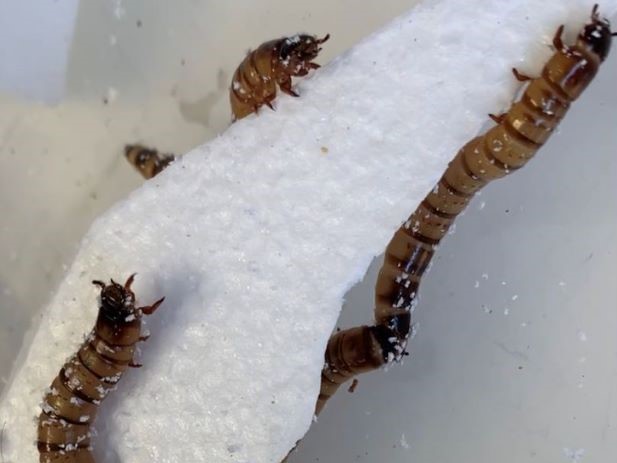The gastronomic preferences of a beetle larvae open new avenues for the circular economy of plastics. From Australia has come news that the larvae of the Zophobas morio beetle, also known as superworms because of their remarkable size, have learned to eat, and more importantly metabolize, polystyrene. Given that expanded polystyrene, or styrofoam, is one of the most widely used plastics and also among the most difficult to recycle, the discovery by researchers at the University of Queensland could prove decisive to the plastic waste problem.
That's how superworms digest polystyrene and styrofoam
In recent years, various studies have focused on the discovery of enzymes capable of degrading plastic. The latest, announced by the University of Austin in Texas, would even be able to degrade PET within a day.
But as for polystyrene, as researchers at the University of Queensland in Australia explain, the problem is that it has always been refractory to microbial degradation. Until now.
In fact, Dr. Chris Rinke's team has found that the microbiome in the gut of Zophobas morio (the caiman beetle) larvae is adapted to digest even polystyrene under the right conditions.
The superworms in the experiment were divided into three groups: one was fed bran, a second kept on a fasting diet, and the third forced on a diet of polystyrene and styrofoam. All the larvae managed to complete their life cycle, and although, of course, those fed bran were healthier, the surprising thing was that the superworms that had eaten only plastic – unlike the ones on a fasting diet – had still managed to gain weight. This means, Rinke explained, that “the larvae are able to metabolize energy from polystyrene thanks to their gut microbiome”. In essence, the superworms function as mini recycling plants that break down plastic to feed gut bacteria. Other valuable compounds such as bioplastics could then be made from the degradation products obtained in this way.
However, organic waste, such as food scraps, should be added to the process in order to "enrich" the diet of the larvae, which would obviously not be healthy with styrofoam alone.
The long-term goal, however, is to get rid of the larvae. The researchers have therefore sequenced the microbiome genome to find out which particular enzymes succeed in the feat of metabolizing polystyrene and styrofoam and thus be able to use them one day in scaleable industrial processes inspired by the “recycling work” of superworms.
Image: University of Queensland



